ACE2 binding is an ancestral and evolvable trait of sarbecoviruses
- PMID: 35114688
- PMCID: PMC8967715
- DOI: 10.1038/s41586-022-04464-z
ACE2 binding is an ancestral and evolvable trait of sarbecoviruses
Abstract
Two different sarbecoviruses have caused major human outbreaks in the past two decades1,2. Both of these sarbecoviruses, SARS-CoV-1 and SARS-CoV-2, engage ACE2 through the spike receptor-binding domain2-6. However, binding to ACE2 orthologues of humans, bats and other species has been observed only sporadically among the broader diversity of bat sarbecoviruses7-11. Here we use high-throughput assays12 to trace the evolutionary history of ACE2 binding across a diverse range of sarbecoviruses and ACE2 orthologues. We find that ACE2 binding is an ancestral trait of sarbecovirus receptor-binding domains that has subsequently been lost in some clades. Furthermore, we reveal that bat sarbecoviruses from outside Asia can bind to ACE2. Moreover, ACE2 binding is highly evolvable-for many sarbecovirus receptor-binding domains, there are single amino-acid mutations that enable binding to new ACE2 orthologues. However, the effects of individual mutations can differ considerably between viruses, as shown by the N501Y mutation, which enhances the human ACE2-binding affinity of several SARS-CoV-2 variants of concern12 but substantially decreases it for SARS-CoV-1. Our results point to the deep ancestral origin and evolutionary plasticity of ACE2 binding, broadening the range of sarbecoviruses that should be considered to have spillover potential.
© 2022. The Author(s).
Conflict of interest statement
J.D.B. consults for Moderna on viral evolution and epidemiology and Flagship Labs 77 on deep mutational scanning. J.D.B. may receive a share of IP revenue as an inventor on a Fred Hutchinson Cancer Research Center-optioned technology/patent (US Patent and Trademark Office application WO2020006494) related to deep mutational scanning of viral proteins. The Veesler laboratory (S.K.Z., A.C.W. and D.V.) has received an unrelated sponsored research agreement from Vir Biotechnology.
Figures




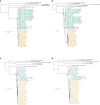
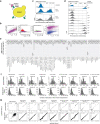



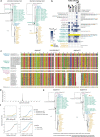
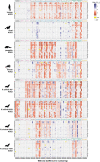
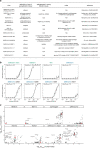


Similar articles
-
Structural characteristics of BtKY72 RBD bound to bat ACE2 reveal multiple key residues affecting ACE2 usage of sarbecoviruses.mBio. 2024 Sep 11;15(9):e0140424. doi: 10.1128/mbio.01404-24. Epub 2024 Jul 31. mBio. 2024. PMID: 39082798 Free PMC article.
-
Evolutionary Arms Race between Virus and Host Drives Genetic Diversity in Bat Severe Acute Respiratory Syndrome-Related Coronavirus Spike Genes.J Virol. 2020 Sep 29;94(20):e00902-20. doi: 10.1128/JVI.00902-20. Print 2020 Sep 29. J Virol. 2020. PMID: 32699095 Free PMC article.
-
V367F Mutation in SARS-CoV-2 Spike RBD Emerging during the Early Transmission Phase Enhances Viral Infectivity through Increased Human ACE2 Receptor Binding Affinity.J Virol. 2021 Jul 26;95(16):e0061721. doi: 10.1128/JVI.00617-21. Epub 2021 Jul 26. J Virol. 2021. PMID: 34105996 Free PMC article.
-
Mutations in the SARS-CoV-2 spike receptor binding domain and their delicate balance between ACE2 affinity and antibody evasion.Protein Cell. 2024 May 28;15(6):403-418. doi: 10.1093/procel/pwae007. Protein Cell. 2024. PMID: 38442025 Free PMC article. Review.
-
Comprehensive Structural and Molecular Comparison of Spike Proteins of SARS-CoV-2, SARS-CoV and MERS-CoV, and Their Interactions with ACE2.Cells. 2020 Dec 8;9(12):2638. doi: 10.3390/cells9122638. Cells. 2020. PMID: 33302501 Free PMC article. Review.
Cited by
-
ACE2-independent sarbecovirus cell entry can be supported by TMPRSS2-related enzymes and can reduce sensitivity to antibody-mediated neutralization.PLoS Pathog. 2024 Nov 13;20(11):e1012653. doi: 10.1371/journal.ppat.1012653. eCollection 2024 Nov. PLoS Pathog. 2024. PMID: 39536058 Free PMC article.
-
Design of customized coronavirus receptors.Nature. 2024 Oct 30. doi: 10.1038/s41586-024-08121-5. Online ahead of print. Nature. 2024. PMID: 39478224
-
Delineating the functional activity of antibodies with cross-reactivity to SARS-CoV-2, SARS-CoV-1 and related sarbecoviruses.PLoS Pathog. 2024 Oct 28;20(10):e1012650. doi: 10.1371/journal.ppat.1012650. eCollection 2024 Oct. PLoS Pathog. 2024. PMID: 39466880 Free PMC article.
-
In Silico Design of miniACE2 Decoys with In Vitro Enhanced Neutralization Activity against SARS-CoV-2, Encompassing Omicron Subvariants.Int J Mol Sci. 2024 Oct 8;25(19):10802. doi: 10.3390/ijms251910802. Int J Mol Sci. 2024. PMID: 39409131 Free PMC article.
-
Sarbecovirus RBD indels and specific residues dictating multi-species ACE2 adaptiveness.Nat Commun. 2024 Oct 14;15(1):8869. doi: 10.1038/s41467-024-53029-3. Nat Commun. 2024. PMID: 39402048 Free PMC article.
References
MeSH terms
Substances
Supplementary concepts
Grants and funding
LinkOut - more resources
Full Text Sources
Other Literature Sources
Miscellaneous


